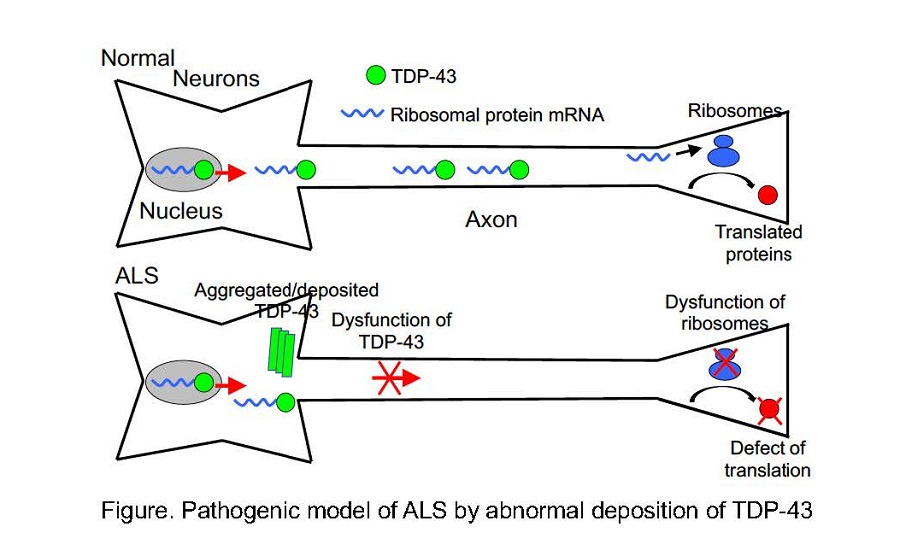Neurotherapeutics
- Analyzing the relationship between function of ALS pathogenic protein TDP-43 and ALS pathology
- Developing a therapy for ALS using immune cells
- Promoting clinical trials of ALS
Research on the pathological molecular mechanism of neurodegenerative diseases and development of a new therapy with high efficacy
The number of patients with age-related neurodegenerative diseases such as Alzheimer’s disease, Parkinson’s disease, and amyotrophic lateral sclerosis (ALS) is steadily increasing in an aging society. In this course, we focus on ALS, which is particularly intractable among these neurodegenerative diseases, and perform research on the pathological molecular mechanism. Based on the results, we aim to develop a new therapy with higher efficacy.
The details are as follows:
1. Analyzing the relationship between function of ALS pathogenic protein TDP-43 and ALS pathology
TDP-43, an RNA-binding protein, is known to mislocalize or abnormally deposit at the lesion site in ALS patients. In ALS, this abnormal function of TDP-43 is assumed to cause various abnormal RNA metabolism, which is involved in the pathology. We focused on the transport of mRNA to neuronal axons, one of the functions of TDP-43, and identified the mRNA of ribosomal proteins as a transport target by TDP-43. This suggests that impaired local protein translation in neuronal axons may be involved in the pathogenesis of ALS. Thus, we are analyzing the molecular mechanism of axonal local translation dysfunction in ALS in more detail using the original axonal analysis method we have established.
Also, we conduct RNA-Seq, splicing analysis, epigenomic analysis, etc. using patient’s nerve tissues to comprehensively understand changes in gene expression including RNA splicing change at lesion sites in ALS patients and identify molecules deeply involved in the pathogenesis of the disease. We plan to apply the seeds obtained from these analyses to the development of a new therapy in the future.

2.Developing a therapy for ALS using immune cells
It has been pointed out that neuroinflammation by glial cells is involved as a factor that modifies the progression of ALS. It is known that immunocompetent cells such as T lymphocytes are also present in the central nervous system and regulate neuroinflammation. We found activation of specific glial cells and immunocompetent cells and changes of gene expression in these cells through analysis in patient’s nerve tissues, blood, and cerebrospinal fluid. We are analyzing the effects of changes in the behavior of these glial cells and immunocompetent cells on the pathology of ALS and aiming to develop a new therapy for ALS from a novel approach of correcting these changes.
3.Promoting clinical trials of ALS
In addition to the aforementioned analysis of pathological condition, we are participating in company-sponsored and investigator-initiated clinical trials of various drugs with different mechanisms of action in cooperation with pharmaceutical companies and other ALS research groups. We are striving to provide a new ALS treatment drug as early as possible.








